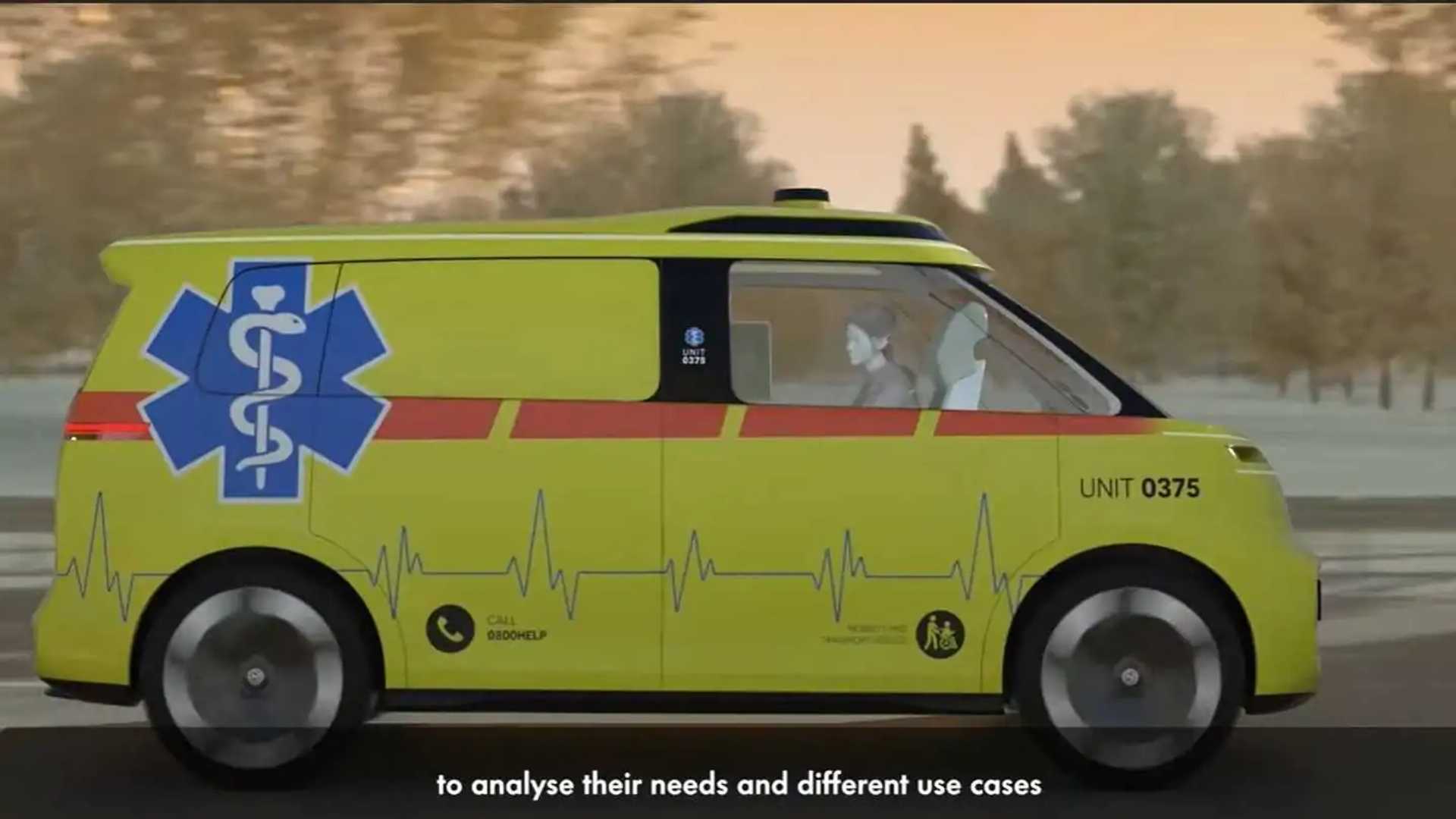A self-driving delivery vehicle and a taxi are also available.
Volkswagen has been busy developing several electric vehicles. One of them is the production version ID Buzz. The concept electric bus will become a mass-produced model and will be available in the United States by the end of 2023. It has been tested on public roads, and the automaker gave us a preview of a prototype. We were captivated by another prototype, and it is a bit different from all the Buzz concepts.
Volkswagen Commercial Vehicles presented an autonomous ambulance prototype based upon the ID Buzz at the ITS World Congress in Hamburg. It lacks a driver, and the front seats point back to the special medical equipment. Unfortunately, there is no further information. However, Volkswagen has uploaded the video at the top of the page that gives a nice visualization about the self-driving ambulance.

“Designers are the ones who create these new living spaces. To get into the mind of someone in the future, and offer them different options, it is necessary to first analyze their needs and possible use cases. Then, you can create a vehicle starting from the basics. Albert Kirzinger (VW Commercial Vehicles’ design boss) explained the process during the event.
The video also shows a few other autonomous concepts, such as a driverless taxi for shared mobility and a delivery van. These concepts feature interiors made mostly from recycled materials like industrial waste and fishing nets. These materials are used to make the floor mats and carpets as well as for door panes.
Commercial vehicle division of the company is proud of these prototypes’ seat designs. The self-driving shuttles’ seats are made of comfortable, animal-free fabric that is easy to clean. VW acknowledges however that the current ride-sharing services in Hamburg are too small to reach large segments of the population and too costly for them to be “really reach wide sections of the population for daily mobility.”